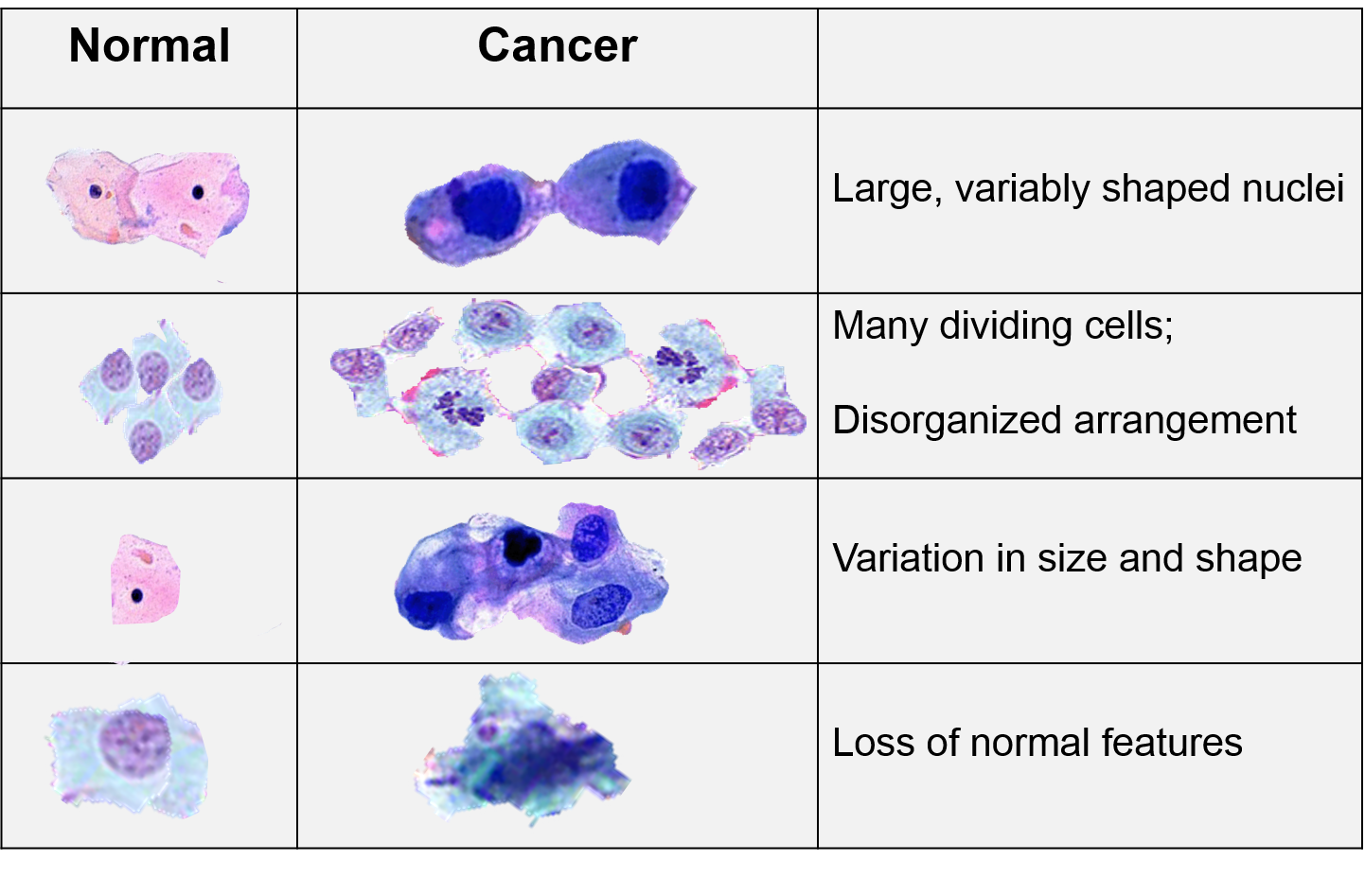Characteristics of Cancer Cells
Cancer cells grow and divide at an abnormally rapid rate, are poorly differentiated, and have abnormal membranes, cytoskeletal proteins, and morphology. The abnormality in cells can be progressive with a slow transition from normal cells to benign tumors to malignant tumors.

In 2000 cancer biologists Robert Weinberg and Douglas Hanahan published an article entitled "The Hallmarks of Cancer." [Cell 2000;100(1):57-70] While they recognized that cancers occurred through a series of mutations in any of many genes. Despite this, they listed six essential alterations in cell physiology that characterized malignancy.
- Self-sufficiency in growth signals: cancer cells acquire an autonomous drive to proliferate - pathological mitosis - by virtue of the activation of oncogenes such as ras or myc.
- Insensitivity to growth-inhibitory (antigrowth) signals: cancer cells inactivate tumor suppressor genes, such as Rb, that normally inhibit growth.
- Evasion of programmed cell death (apoptosis): cancer cells suppress and inactivate genes and pathways that normally enable cells to die.
- Limitless replication potential: cancer cells activate specific gene pathways that render them immortal even after generations of growth.
- Sustained angiogenesis: cancer cells acquire the capacity to draw out their own supply of blood and blood vessels - tumor angiogenesis.
- Tissue invasion and metastasis: cancer cells acquire the capacity to migrate to other organs, invade other tissues, and colonize these organs, resulting in their spread throughout the body.

